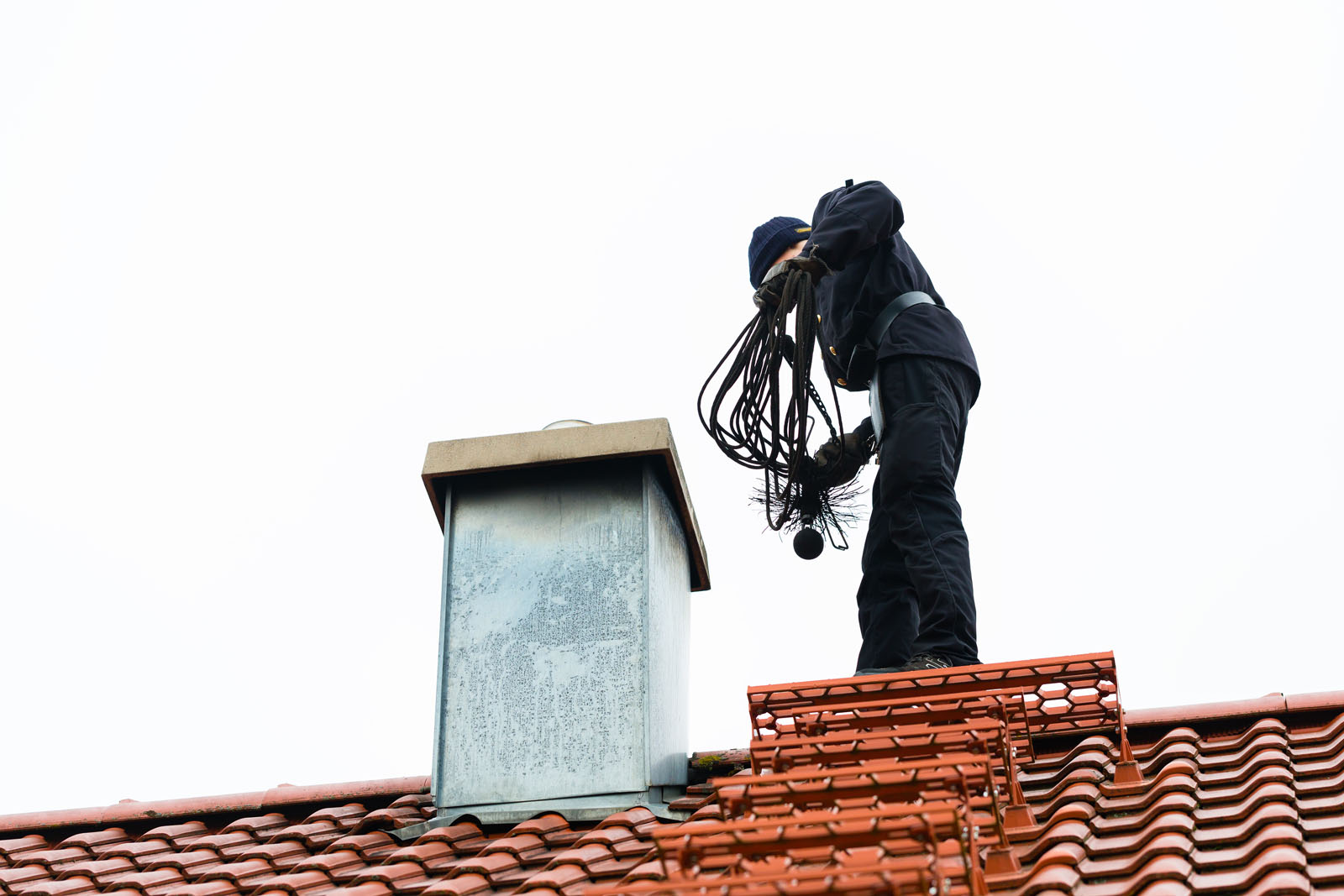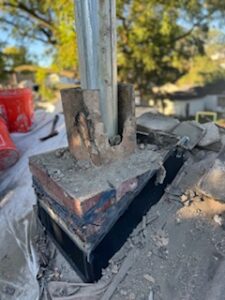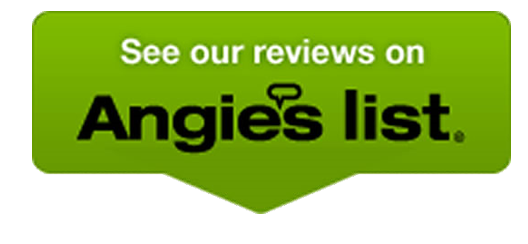
Making sure your chimney operates safely and effectively is a priority for any homeowner. At London Chimney Services, we perform thorough chimney inspections using the latest technology and following top industry protocols. Whether your fireplace runs on wood or oil, our certified team inspects both single and multi-story chimneys throughout Vadnais Heights .
The Importance of Routine Chimney Inspections
According to the NFPA, homeowners should have their chimneys inspected annually. These inspections help prevent fires, locate possible carbon monoxide leaks, and boost the performance of your fireplace and venting systems. Identifying small problems early during these checks can help save you from major safety concerns and costly repairs later on.
We’ve spent more than 45 years helping Minneapolis residents maintain chimney safety. Our inspections are aimed at spotting early signs of wear or damage that could impact safe operation and helping to ensure your fireplace system is efficient and protected.
What Our 21-Point Safety Inspection Covers

London Chimney Services uses a 21-step checklist to inspect both the visible and hidden components of your chimney. Our certified team performs:
- Internal flue checks for creosote, cracks, or loose gaps
- Evaluation of the chimney crown and cap conditions
- Full masonry review for weakening or crumbling areas
- Venting and drafting assessments for proper operation
- Identification of leaks or trapped moisture
We walk you through any findings and offer service recommendations to help keep your chimney in solid, safe shape.
Understanding the Three Levels of Chimney Inspection
Not every chimney requires the same kind of inspection, which is why we offer three different levels to meet your specific needs. The level depends on your chimney’s age, usage, and any alterations made to it.
- Level I Inspection: This is the basic and most common type of chimney inspection. Our CSIA-certified professionals conduct a thorough visual examination of the chimney’s interior and exterior. They look for creosote buildup, any visible blockages, and structural concerns. It’s suitable for chimneys with no history of issues or changes over the past year.
- Level II Inspection: This inspection is ideal if you’re buying or selling a home, had a chimney fire, or changed your fireplace setup. Using high-resolution cameras, our certified technicians examine the flue liner from top to bottom. They identify any cracks or gaps and walk you through their findings.
- Level III Inspection: For suspected hidden damage, our Level III inspection provides the most extensive look into your chimney’s structure. If needed, sections of your chimney or nearby construction are opened to inspect hard-to-reach areas. This level is essential when major events like chimney fires or storm damage occur.
Typical Findings During Chimney Inspections
Routine chimney inspections often bring to light various problems that can worsen if not handled in time. Here are a couple of the most frequently discovered issues:
- Creosote Deposits: Burning wood leads to the formation of creosote, a flammable material that collects on the inner walls of the chimney. Without proper maintenance, these deposits can ignite and trigger hazardous chimney fires.
- Compromised Chimney Liners: Openings or fractures in the chimney liner may let smoke, fumes, and gases escape into the home. If this type of liner damage is found, we provide expert relining services to help restore your chimney’s function and safety.
Inspection Findings That May Require Repairs
- Chimney Moisture Damage: Over time, water entering the chimney structure can cause cracks, erosion, and other problems. Our technicians look for leak signs and suggest protective solutions like installing chimney caps, repairing the crown, or fixing the flashing.
- Ventilation Blockages: Accumulated creosote, animal nests, and debris are common causes of blocked chimneys. These obstructions interfere with airflow and raise the risk of fires. We remove all blockages and may advise on chimney cap installation to prevent repeat problems.
The Importance of Inspecting Gas Fireplaces
Even though gas fireplaces don’t produce creosote buildup, inspections are still necessary. Damage to the liner or problems within the venting system can lead to safety hazards, including the risk of carbon monoxide exposure. Our certified technicians conduct detailed inspections to check for cracks, blockages, and seal failures, making sure your gas fireplace continues to function properly and safely.
What Makes London Chimney Services the Right Choice for Chimney Inspections
When it comes to chimney inspections in Minneapolis, London Chimney Services is a trusted name for quality, safety, and customer care. Here’s why so many homeowners rely on us:
- Certified and Skilled Technicians: Our inspectors are CSIA-certified and bring advanced tools and knowledge to every job.
- Clear and Complete Results: You’ll get a full inspection report with images and easy-to-understand descriptions of any issues we find.
- Local Experience You Can Count On: With over 45 years serving Minnesota homes, we’re well aware of how the local climate affects chimney systems.
Prioritizing Your Safety: We explain our findings in detail and guide you through any recommended repairs, always keeping your family’s safety in mind.
Other Chimney Services We Offer:
Chimney Caps & Screens
Fireplace Inserts
Chimney Masonry
Chimney Tuckpointing
Chimney Relining
Chimney Rain Caps
Chimney Sweep & Cleaning
Frequently Asked Questions (FAQ)
Q: When should I arrange for a chimney inspection?
A: The NFPA recommends an annual chimney inspection for all homes with fireplaces or chimneys. These routine inspections help detect safety issues early, reduce the risk of fires, and keep your venting and fireplace systems operating correctly and efficiently.
Q: What separates a chimney cleaning from an inspection?
A: An inspection checks the chimney’s liner, structure, and venting for safety issues, while cleaning removes soot, creosote buildup, and any debris inside the flue. If our certified technicians discover signs of creosote or obstructions during the inspection, they may suggest chimney cleaning as part of the complete service.
Q: What happens if the chimney inspection finds problems?
A: If your chimney inspection uncovers structural or safety concerns, it’s important to act right away. We’ll give you a clear report that outlines what needs to be fixed and suggest the appropriate repairs. Our team will walk you through the process and help you prioritize the repairs based on severity.
Q: How much time does a chimney inspection usually take?
A: For a Level I chimney inspection, plan for 45 minutes to one hour. More advanced inspections, like Level II or III, can take longer if specialized tools or deeper access are required, especially for hidden areas within the chimney structure.
Q: Should I try inspecting my own chimney?
A: You can visually inspect your chimney for surface issues, but only a professional inspection guarantees thorough safety checks. Our CSIA-certified technicians are trained to uncover issues like cracked liners, creosote buildup, or venting damage. We use tools designed to reach every part of your chimney for a complete evaluation.
Q: What exactly is creosote, and why is it a concern?
A: Creosote is a sticky, tar-like byproduct that results from burning wood in your fireplace. As it gathers along the flue, this buildup becomes a serious fire risk due to its highly flammable nature. During a chimney inspection, our technicians look for any creosote accumulation and will recommend cleaning to help prevent chimney fires and maintain overall safety.
Q: Do gas fireplaces require inspection even though they don’t burn wood?
A: Yes, gas fireplaces still need regular inspections. Although creosote is not a factor, issues like a damaged liner or blocked venting can cause dangerous smoke or carbon monoxide leaks. Our trained technicians conduct thorough inspections to confirm the entire system is functioning safely.
Q: How do I know it’s time to have my chimney inspected?
A: You may need a chimney inspection if you notice:
· Smoke entering the room while your fireplace is in use
· Strange smells coming from the fireplace or chimney
· Cracked or damaged masonry on the outside of your chimney
· Moisture or leaks around the chimney area
· It’s been more than one year since your last inspection
· You’ve recently moved into a home or made changes to the fireplace or chimney structure
Q: What is a chimney camera inspection, and when should I get one?
A: A camera inspection allows our technicians to examine the interior of the chimney and flue liner using a specialized video device. This type of inspection is typically part of a Level II chimney inspection and is suggested after structural changes, a chimney fire, or before buying a new property.
Q: Can I continue using my fireplace if the liner has visible cracks?
A: It’s unsafe to use your fireplace when the chimney liner has cracks. Heat and smoke can escape through those openings, increasing the chance of fires or carbon monoxide exposure. Our technicians will assess the damage and recommend relining options to bring your chimney back to safe working condition.
Book Your Annual Chimney Inspection Now
Don’t wait for cold weather to arrive before checking your chimney’s condition. Whether your home features a gas unit or a wood-burning fireplace, an annual chimney inspection plays a key role in keeping your chimney safe and efficient.
Contact London Chimney Services at 612-377-1500 or click here to make your appointment now.
Areas We Offer Our Chimney Inspections:
Hennepin County
Bloomington | Brooklyn Center | Brooklyn Park | Eden Prairie | Edina | Excelsior | Golden Valley | Maple Grove | Minneapolis | Minnetonka | Minnetrista | Mound | Orono | Plymouth | Richfield | St Louis Park | Wayzata
Carver County
Scott County
Prior Lake | Savage | Shakopee
Dakota County
Apple Valley | Burnsville | Inver Grove Heights | Lakeville | South St Paul
Washington County
Cottage Grove | Lake Elmo | Mahtomedi | Oakdale | Woodbury
Ramsey County
Highland Park | Little Canada | Maplewood | Mounds View | North St Paul | Roseville
Shoreview | St Paul | Vadnais Heights| White Bear Lake
Anoka County
Blaine | Fridley | Lino Lakes
London Chimney Services Google Map
Vadnais Heights, MN Google Map
Directions to London Chimney Services Google Map
About Vadnais Heights, MN
Cradled in the whispering woods and wetlands of northeast Ramsey County, Vadnais Heights is a city defined by quiet sophistication and ecological richness. Its landscape, a sanctuary of protected open spaces, centers around the Vadnais-Sucker Lake Regional Park—an untouched gem where mirrored waters and dense forest trails offer a daily retreat from modern life. Rooted in a legacy of stewardship, the city has long prioritized conservation and mindful growth, ensuring its natural character remains pristine and beloved.
Life in Vadnais Heights flows with a gentle rhythm. Community events like Heritage Days bring residents together under a canopy of food, music, and shared stories, while local eateries and family-run markets infuse the area with a grounded charm. It’s a place where biking to a trailhead or strolling to a neighborhood concert feels second nature, and where modern homes coexist in harmony with their surroundings. Vadnais Heights isn’t flashy—it doesn’t need to be. Its allure lies in its quiet dignity, in the hush of the wind across a lake, in the rustle of cattails, and in the unspoken sense that here, nature still holds the lead.
- London Chimney Services
- Vadnais Heights, MNVadnais Heights, MN Zip Codes
55109, 55110, 55127
Get Your Chimney Inspected Today
Reach out to London Chimney Services at 612-377-1500 or click here to schedule your inspection online.









